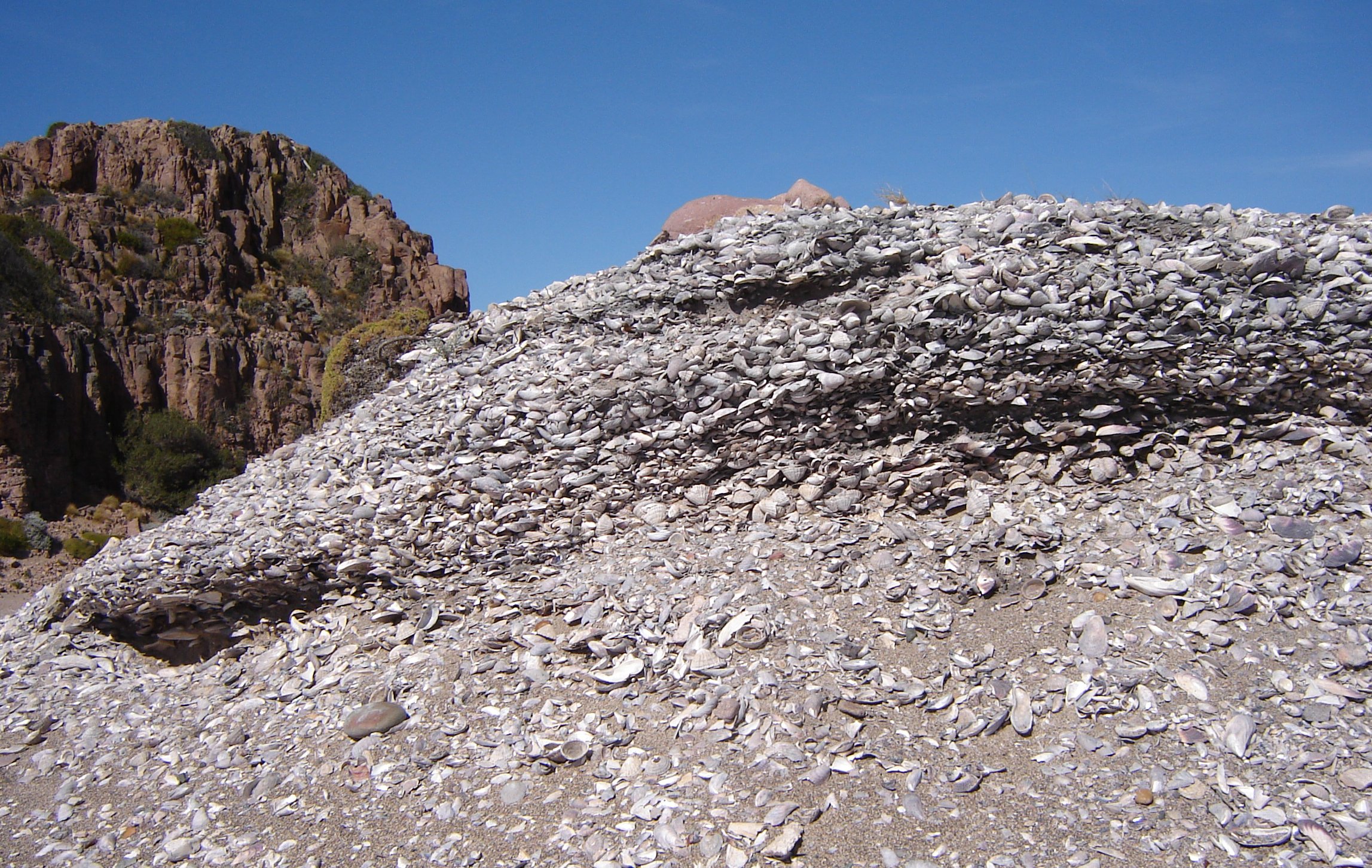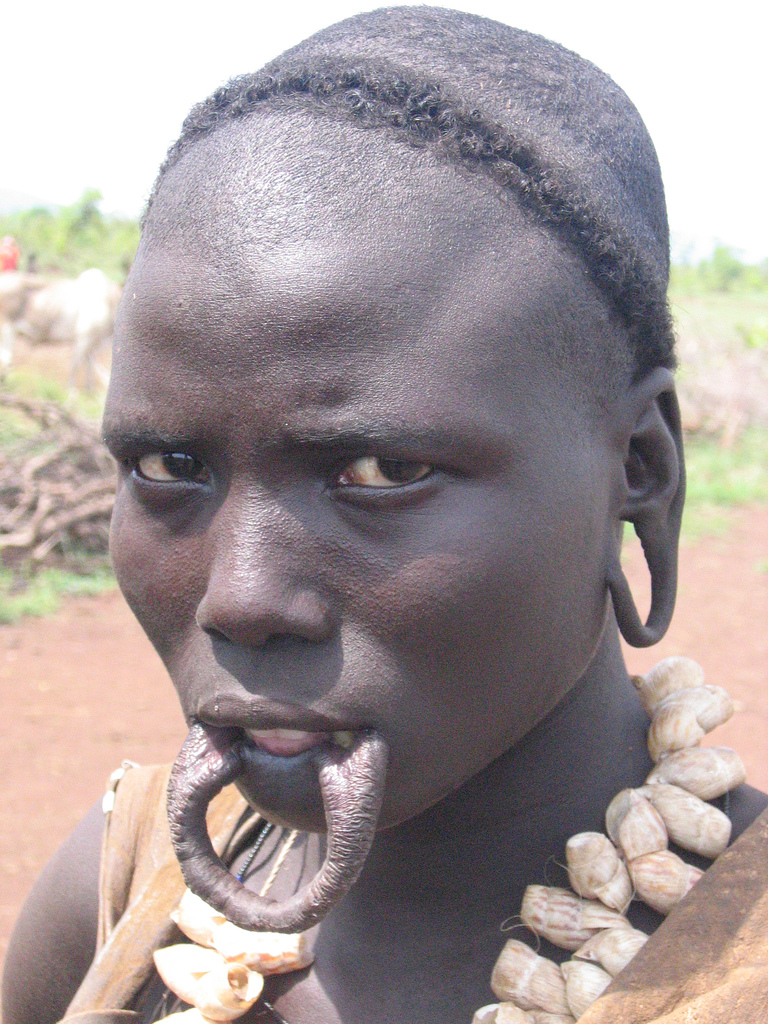|
Butana Group
The Butana Group was a prehistoric, neolithic culture in the eastern part of modern Sudan, that flourished from the fourth to the early third millennium BC. The Butana Group is mainly known from its pottery that is often decorated with incised lines, including fingerprints. The ceramic is comparable to those from other (late) neolithic culture in the Sudanese Nile Valley. They produced stone tools. The main economical base was most likely animal breeding, but there is also evidence for domesticated forms of wheat and barley, attesting agriculture. Several animals were hunted such as antelopes, suidae and elephants. Shell middens indicate the extensive use of land snails for food. Not much is known about settlement patterns, but some settlement sites are almost 10 ha large indicating longer occupations. The people of the Butana Group lived in small, round huts. Not many cemeteries are known, but people were most often buried in a contracted position. The only grave goods are pers ... [...More Info...] [...Related Items...] OR: [Wikipedia] [Google] [Baidu] |
Sudan
Sudan ( or ; ar, السودان, as-Sūdān, officially the Republic of the Sudan ( ar, جمهورية السودان, link=no, Jumhūriyyat as-Sūdān), is a country in Northeast Africa. It shares borders with the Central African Republic to the southwest, Chad to the west, Egypt to the north, Eritrea to the northeast, Ethiopia to the southeast, Libya to the northwest, South Sudan to the south and the Red Sea. It has a population of 45.70 million people as of 2022 and occupies 1,886,068 square kilometres (728,215 square miles), making it Africa's List of African countries by area, third-largest country by area, and the third-largest by area in the Arab League. It was the largest country by area in Africa and the Arab League until the 2011 South Sudanese independence referendum, secession of South Sudan in 2011, since which both titles have been held by Algeria. Its Capital city, capital is Khartoum and its most populated city is Omdurman (part of the metropolitan area of Khar ... [...More Info...] [...Related Items...] OR: [Wikipedia] [Google] [Baidu] |
Midden
A midden (also kitchen midden or shell heap) is an old dump for domestic waste which may consist of animal bone, human excrement, botanical material, mollusc shells, potsherds, lithics (especially debitage), and other artifacts and ecofacts associated with past human occupation. These features provide a useful resource for archaeologists who wish to study the diets and habits of past societies. Middens with damp, anaerobic conditions can even preserve organic remains in deposits as the debris of daily life are tossed on the pile. Each individual toss will contribute a different mix of materials depending upon the activity associated with that particular toss. During the course of deposition sedimentary material is deposited as well. Different mechanisms, from wind and water to animal digs, create a matrix which can also be analysed to provide seasonal and climatic information. In some middens individual dumps of material can be discerned and analysed. Shells A ... [...More Info...] [...Related Items...] OR: [Wikipedia] [Google] [Baidu] |
Lip Plug
The lip plate, also known as a lip plug, lip disc, or mouth plate is a form of body modification. Increasingly large discs (usually circular, and made from clay or wood) are inserted into a pierced hole in either the upper or lower lip, or both, thereby stretching it. The term labret denotes all kinds of pierced-lip ornaments, including plates and plugs. Archaeological evidence indicates that disk and plate labrets have been invented multiple times including in Africa (Sudan, Eritrea and Ethiopia; 5500–6000 BC) Mesoamerica (1500 BC), and coastal Ecuador (500 BC). Usage in Africa In some African countries, a lower lip plate is usually combined with the two lower front teeth, sometimes all four. Among the Sara people and Lobi of Chad, a plate is also inserted into the upper lip. Other tribes, such as the Makonde of Tanzania and Mozambique, used to wear a plate in the upper lip only. Due to the Mursi reliance on tourism, many sources have suggested that the plate's size was ... [...More Info...] [...Related Items...] OR: [Wikipedia] [Google] [Baidu] |
Neolithic Cultures Of Africa
The Neolithic period, or New Stone Age, is an Old World archaeological period and the final division of the Stone Age. It saw the Neolithic Revolution, a wide-ranging set of developments that appear to have arisen independently in several parts of the world. This "Neolithic package" included the introduction of farming, domestication of animals, and change from a hunter-gatherer lifestyle to one of settlement. It began about 12,000 years ago when farming appeared in the Epipalaeolithic Near East, and later in other parts of the world. The Neolithic lasted in the Near East until the transitional period of the Chalcolithic (Copper Age) from about 6,500 years ago (4500 BC), marked by the development of metallurgy, leading up to the Bronze Age and Iron Age. In other places the Neolithic followed the Mesolithic (Middle Stone Age) and then lasted until later. In Ancient Egypt, the Neolithic lasted until the Protodynastic period, 3150 BC.Karin Sowada and Peter Grave. Egypt in ... [...More Info...] [...Related Items...] OR: [Wikipedia] [Google] [Baidu] |


